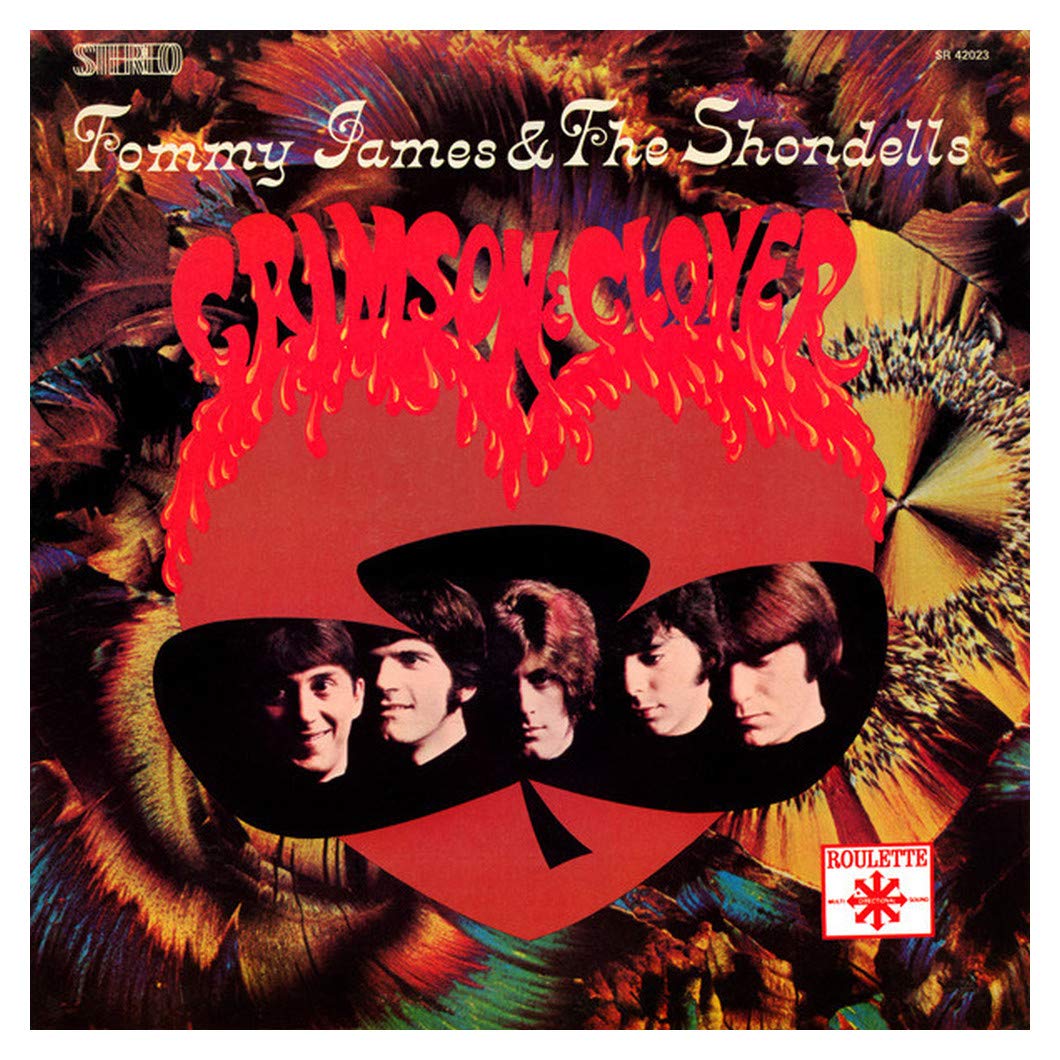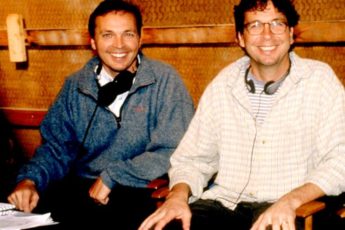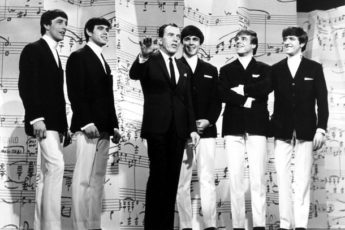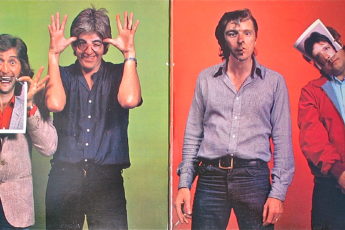“I’m just gonna fool around, man, like, just…do a thing, y’know, whatever, and I’ll just, y’know.” With those inspiring words from the recording engineer, Tommy James & The Shondells proceeded to create a #1 record, ‘Crimson and Clover.’ But more than just that, they were also moved enough to fashion one of the most headphones-worthy chart-toppers ever due to its elaborate and unique use of the “tremolo effect.”
This psychedelic-tinged classic penned by James was one of the earliest songs to be recorded on 16-track equipment and incorporated just about every state-of-the-art electronic device available at the time. But primarily it featured the innovative use of a studio effect known as tremolo. What’s tremolo, you ask? Essentially, using electronic effects in guitar amplifiers and effects pedals, it rapidly turns the volume of a signal up and down, modulating it at a certain speed and depth to create a shuddering chime, or perhaps more identifiably, a trembling effect. ‘Crimson and Clover’ was among the first, but hardly the only recognizable use of guitar tremolo in a rock song: You can find it most famously in the intros of both the Rolling Stones’ apocalyptic ‘Gimme Shelter’ and Creedence Clearwater Revival’s swampy ‘Born on the Bayou,’ as well as on the ringing opening strum of Pink Floyd’s ‘Money.’ Even more prominently, it’s heard in Green Day’s ‘Boulevard of Broken Dreams,’ Rage Against The Machine’s ‘Guerilla Radio’ and in all-commanding force on ‘How Soon is Now’ by The Smiths. And, so too does that delicious quivering, reverberating guitar sound dominate ‘Crimson and Clover,’ starting immediately after the sultry “Ahh” that opens the song and vibrating continuously in time with the song’s rhythm. But what separates this tune from the rest of the substantial tremolo register is when Tommy James shifts the shaking sound to another “instrument.”
“We had done the record with tremolo on the guitar,” explained James. “We recorded it with tremolo pretty much in synch with the music. In other words, we tried to make it so that it was vibrating at the same speed that the drums were playing. So we’d made the whole record that way. And then at the end, it was like one of those whimsical ideas, we said, ‘Why don’t we put it on the voice?’ So that’s what we did, we ran the vocal mic through an Ampeg guitar amp, turned on the tremolo and mic’d it, and ran it back through the board. It was just that simple.” Starting in the attached clip here at 4:32 (note, this is the dreamy extended version heard less often than the abridged radio rendition), James, with trailblazing tremolo wired through his mic, magically sang the wobbly line “Crimson and clover / Over and over,” well, over and over. “The whole recording of ‘Crimson and Clover’ took about five hours,” James continued. “it wasn’t like we sat and thought about it a lot, we just did what came naturally, and the tremolo vocal part was something that we came up with in about 20 seconds.”
‘Crimson and Clover’ entered the U.S. charts in December of 1968, where it stayed for 16 weeks on the Billboard Hot 100. Following a performance of the song on The Ed Sullivan Show on January 26th, it became number one on February 1, 1969, which fell roughly two years after the band’s prior #1 hit, garage rocker ‘Hanky Panky.’ And those were but two of the fourteen Top 40 hits for Michiganders Tommy James & The Shondells, a list that also included late ‘60’s standards ‘I Think We’re Alone Now,’ ‘Sweet Cherry Wine’, ‘Mirage,’ ‘Crystal Blue Persuasion’ and ‘Mony Mony.’ Incredibly, over two decades later, covers of ‘I Think We’re Alone Now’ (by Tiffany) and ‘Mony Mony (by Billy Idol) reached Billboard #1 consecutively in back-to-back weeks (November 14th and 21st of 1987). ‘Crimson and Clover,’ too, became a huge remake hit for Joan Jett & The Blackhearts in 1982.
Oddly, the conspicuous title ‘Crimson and Clover’ had been decided before a song had ever been written for it. The curious combination of still-unknown meaning was said to have come to Tommy James in a stream of consciousness once as he was waking up, comprising his favorite color – crimson – and his favorite flower – clover. Yet more incongruous, perhaps, around the height of the tune’s popularity the group even toured extensively with Vice President Hubert Humphrey during his ill-fated 1968 presidential campaign, for which Humphrey subsequently showed his appreciation by writing the liner notes for the “Crimson & Clover” album (on which the titular song unsurprisingly appeared). But notwithstanding Humphrey’s forgettable showing in the election where he was trounced by Richard Nixon, Tommy James & The Shondells’ notoriety was etched for history by the brilliantly wiggly tremolo sounds radiating from both the guitar and, even more enduringly, the vocals on ‘Crimson and Clover.’ I think I could listen to that lustrously quivering inspiration…over and over.







Rob MacMahon
July 12, 2021 5:52 pmBG: Love this tune! Love the story! Love Joan’s cover! Ahhh!! RMac
So Much Great Music
July 12, 2021 10:32 pm“Ahhh” is right!
Von
September 1, 2021 2:43 amSo many memories I miss my youth!